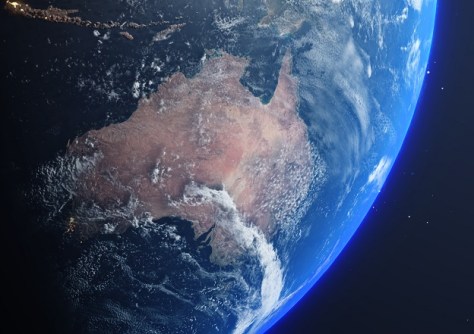
Mainstream media outlets are reporting this morning that the federal government has cancelled the $1.2 billion National Space Mission for Earth Observation (NSMEO), for “budget repair” purposes.
Reportedly, Australia will now have to continue to rely upon overseas partners for access to Earth observation data.
The whole idea of the NSMEO was to reduce sovereign risk by providing Australia with its own remote sensing capabilities. An Australian Academy of Science report published in early 2022 called for a 10-year plan to correct the situation, which would include “investment in a home-grown Earth observation satellite program, which would design, build, launch and operate the satellites and the sensors on-board used to collect a wide range of data types”.
Earth observation from space is vital to Australia’s interests, with a report issued by FrontierSI in 2021 finding that “Satellite Earth observations and other forms of remote sensing contribute over $5 billion annually to Australian GDP.”
A 2021 report by Deloitte found that “Australia’s EO sector, and the benefits EO data generates for other industries, is exposed to a significant sovereign supply risk: Australia does not own or operate any EO satellite systems. At the same time, the threat of a DOS [denial of service] event is becoming increasingly real, particularly in the context of Australia’s role in the Global Observing System (GOS).”
The Deloitte report went on to say that “The annual economic cost of a DOS event for EO is estimated as follows:
- 81% of activity in the EO sector would almost immediately cease to exist as we know it. This equates to $226 million in lost (direct) value added.
- The Australian economy (GDP) would contract by $1.9 billion due to the disruption in activity by end users of EO data (based on currently available data).”
When then federal treasurer Josh Frydenberg delivered the 2022–23 Budget on 29 March, $38.5 million per annum was earmarked for four satellites, the first phase of the NSMEO. The overall program was promised $1.16 billion out to 2039… about $70 million annually.
As Spatial Source reported mid-last year, about 500 people were expected to be involved in the project. Yet even at that time, there was speculation that politics may turn out to be the project’s Achilles heel.
Glen Tindall, chief executive of space systems at Electro Optic Systems, told Spatial Source in June 2022 that to build an industry to create, maintain and operate a satellite constellation would require a long-term commitment from government. “It takes decades to bring these missions to fruition,” he says.
As we reported in December 2022, “Upon taking office in May 2022, the incoming Labor government ordered an urgent review of government spending. There was speculation in the media that this would include at least part of the space budget. However, according to a statement from the Australian Space Agency (ASA), which has carriage of the project, the NSMEO allocation survived not only the review, but also the first budget of the new government.”
At that time, a spokesperson for the ASA told Spatial Source that, “The Government remains committed to delivering on space programs that align with national priorities and deliver value for all Australians. There have been no changes to funding for space programs in this Budget.”
Nonetheless, there was a high degree of uncertainty and a lack a clarity around the goals of the NSMEO, with numerous industry figures expressing concern.
As we reported in December, “Rumours persist that the project is being delayed, or its scope reduced due to budget constraints in Canberra. It’s not clear whether this is true or not. What is for sure is that the project is effectively hidden from sight. Even well-connected figures in the industry are unsure of its fundamental aims.”
The cancellation of the NSMEO follows the axing last month of the Australian Spaceports program, which would have seen government funding assist in the establishment of launch facilities on Australian soil.







